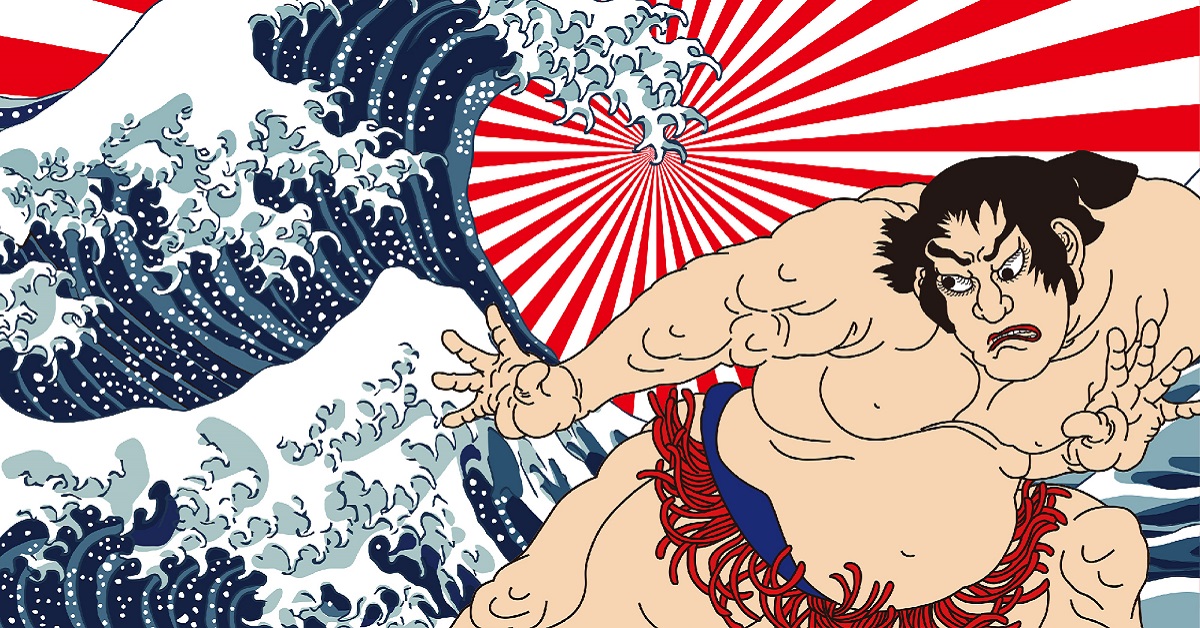Maegashira is far from being just “below San’yaku”—it is the engine that drives the stories of sumo. Upper Maegashira chase Kinboshi, mid-tier strive for steady progress, and lower ranks fight for survival. Understanding these battles makes sumo watching richer and more exciting.
What is Maegashira?
Maegashira refers to sumo wrestlers ranked in the Makuuchi division who are below the ranks of Yokozuna, Ozeki, Sekiwake, and Komusubi. They are also known as “Hiramaku” (flat ranks). On the banzuke (ranking sheet), they are written as “Maegashira No. X,” with smaller numbers indicating a higher rank. For example, Maegashira 1 often faces San’yaku wrestlers and Yokozuna, making it a highly visible position. Conversely, higher numbers place wrestlers closer to the bottom of the division, where they risk being demoted to the Juryo division. This wide range makes Maegashira a division full of variety, showcasing diverse wrestling styles and personalities.
| Rank Range | Characteristics | Typical Opponents |
|---|---|---|
| Maegashira 1–4 | Frontline challengers for top ranks | San’yaku & Yokozuna |
| Maegashira 5–10 | Stable mid-tier wrestlers | Both upper and lower Maegashira |
| Maegashira 11+ | At risk of demotion | Lower Maegashira & top Juryo |
Ranking and Promotion/Demotion
The position of a Maegashira depends on performance in official tournaments. There are six Grand Sumo tournaments per year, each lasting 15 days. Wrestlers who achieve a winning record (8 or more wins) will move up the ranks, while those with a losing record (8 or more losses) will drop. However, the quality of opponents also matters—an 8–7 at Maegashira 1 can lead to a bigger promotion than the same record at Maegashira 10.
| Record | Ranking Movement | Notes |
|---|---|---|
| 10+ wins | Significant promotion | Possible San’yaku entry |
| 8–9 wins | Small promotion | Rank stability |
| 7 or fewer wins | Demotion | Risk of falling to Juryo |
Role and Appeal of Maegashira
Maegashira wrestlers are not just “below San’yaku”—they are the backbone of the top division and bring variety to sumo. Some specialize in pushing and thrusting, while others excel at yotsu-zumo (grappling on the belt). Many wrestlers climb from Maegashira to Sekiwake, Ozeki, or even Yokozuna, making it a stage full of potential and drama. Fans enjoy seeing young prospects topple veterans or wrestlers returning to form after demotion.
| Appeal | Example |
|---|---|
| Style diversity | Push-thrust, yorikiri, throws |
| Drama | Promotion/demotion battles |
| Kinboshi potential | Upsets against Yokozuna |
Kinboshi and the Value of Maegashira 1
Maegashira 1 is especially coveted because it offers the chance to win a Kinboshi—awarded when a Maegashira defeats a Yokozuna. This brings not only honor but also financial benefits, as Kinboshi victories are recorded for life and contribute to a wrestler’s retirement pension. For both wrestlers and fans, a Kinboshi match is one of the most exciting moments in sumo.
| Item | Details |
|---|---|
| Kinboshi condition | Maegashira defeats Yokozuna |
| Rewards | Pension bonus, prestige |
| Historical value | Recorded for life |
The Challenge of Staying in Maegashira
Lower Maegashira ranks are constantly at risk of demotion to Juryo. Every match matters, as a single win or loss can determine rank movement. Wrestlers at Maegashira 11 and below often face top Juryo wrestlers in “promotion/demotion matches,” making a winning record crucial for survival.
| Position | Risk | Strategy |
|---|---|---|
| Maegashira 11–15 | Demotion danger | Prioritize winning record |
| Maegashira 6–10 | Mid-tier stability | Balanced match approach |
| Maegashira 1–5 | Upper-rank challenge | Aim for Kinboshi |
How Beginners and Foreign Fans Can Enjoy Maegashira
For newcomers and foreign fans, Maegashira bouts offer variety, balanced matchups, and exciting finishes. Learning about each wrestler’s physique, fighting style, and personality enhances the viewing experience. Many Maegashira bouts are evenly matched, making outcomes unpredictable and thrilling.
| Viewing Tip | Details |
|---|---|
| Know the wrestlers | Style, physique, personality |
| Watch for techniques | Throws, pushes, belt work |
| Predict outcomes | Even matchups are common |
Conclusion
Maegashira is a vital and dynamic division in sumo, showcasing diverse skills, dramatic rank changes, and the thrill of Kinboshi victories. Upper Maegashira wrestlers have the chance to challenge Yokozuna, mid-tier Maegashira maintain stability while seeking advancement, and lower Maegashira fight to avoid demotion. This structure produces new storylines every tournament, captivating fans.
For beginners and foreign spectators, Maegashira matches are an excellent introduction to sumo—offering varied techniques, evenly matched battles, and personal rivalries. Far from being “just below San’yaku,” Maegashira is the stage where future champions emerge and unforgettable moments happen. Next time you look at a banzuke, check the Maegashira ranks and follow their 15-day journey—you might witness the birth of the next Yokozuna.





コメント